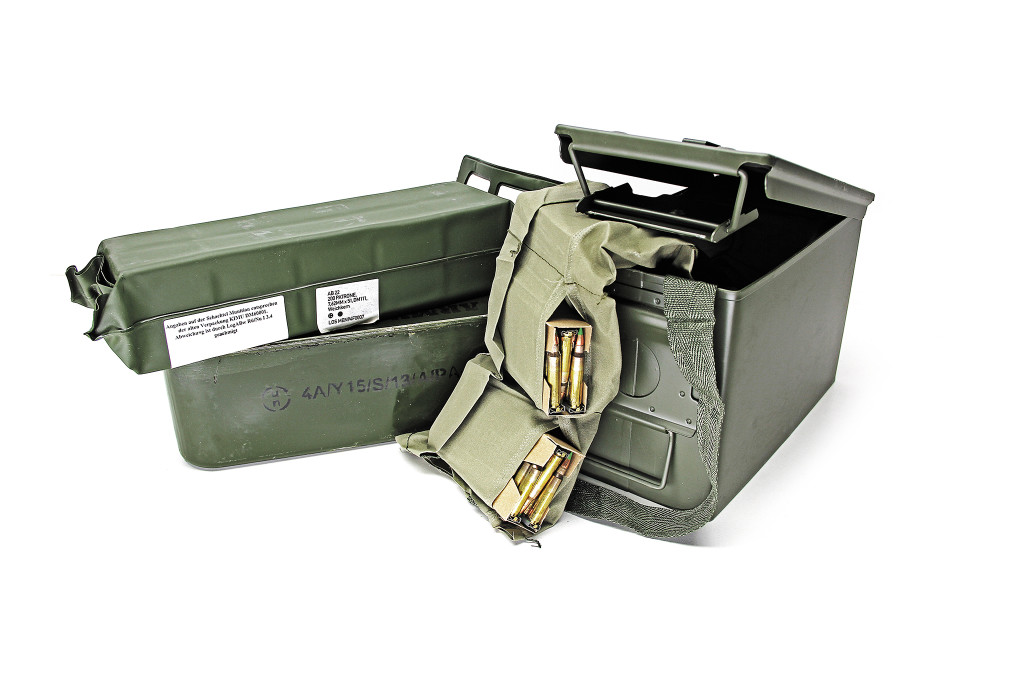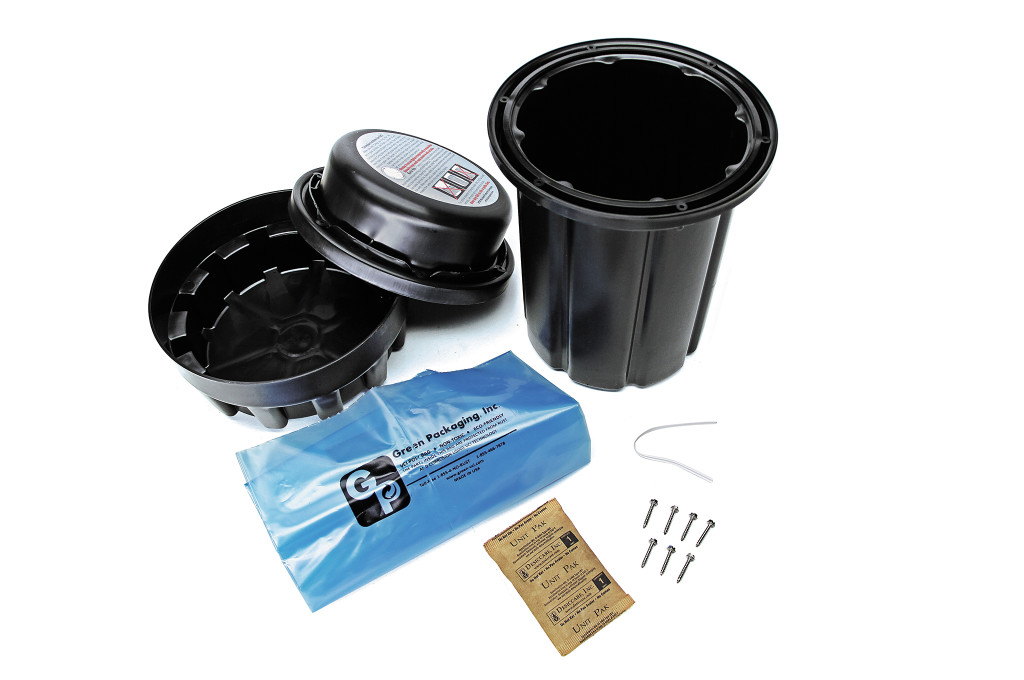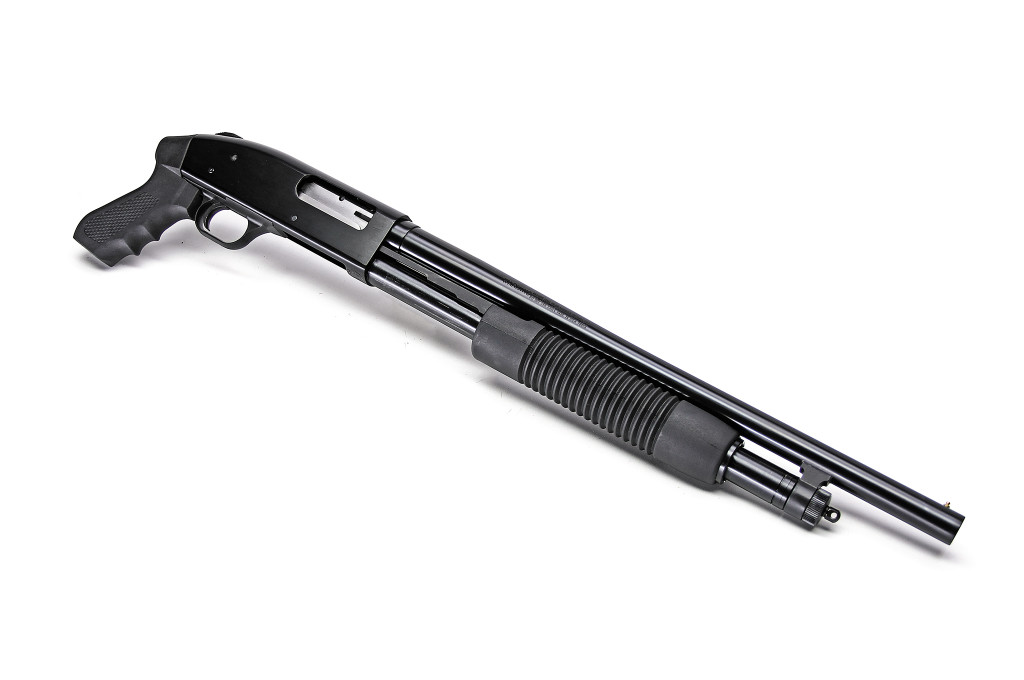Offgrid Preparation Stashing Essential Gear, Just in Case
In This Article
There are a few things in life that are just necessary evils — things that we all recognize are necessary, but hate doing just the same. Things like going to the dentist, purchasing life insurance, or preparing our last will and testament come to mind. Another necessary evil I find quite objectionable is the concept of caching a firearm. The idea of spending hard-earned money on a firearm whose only purpose is to be secured in a secret location, never to be used or enjoyed except in the most dire of circumstances is one such evil. But the real question becomes, is it necessary?
The practice of caching dates back to when man first walked on two feet. Quite simply, caching is the act of secretly hiding provisions or supplies for use at a later time. Caches can be as small as a candy bar and a bottle of water or they can occupy an entire warehouse. The size of a cache depends entirely on its purpose and your ability to properly secure it. The concept of saving supplies for use at a later date does not work very well if those supplies are either stolen or eaten prior to their retrieval. Let's review three critical aspects of a creating a successful cache: preparation, security, and accessibility.
First and foremost, preparation of the items to be cached is of utmost importance. Food items must be selected based upon their ability to be stored for long periods of time. Prepackaged items that are specifically designed for long-term storage such as military-style Meals Ready-to-Eat (MRE) or commercially available freeze-dried emergency food supplies are perfect for any food cache. The convenience of using prepackaged meals for small to midsized caches outweighs the preparation and cost savings of preparing canned food oneself.

Larger caches that are designed to sustain several people over long periods of time will benefit from a combination of prepackaged emergency food supplies, store-bought canned food, and provisions prepared by the individual. As new canned food supplies are acquired or produced, older supplies can be used to ensure a periodic rotation of supplies. This practice keeps supplies from getting too old and verifies that one's canning processes are being performed properly — so the food is not spoiled after being stored for a long period of time.
Care must be taken to ensure that all food supplies are carefully packed without compromising the integrity of the vacuum-sealed packages or containers. If the seal is damaged, the food will spoil over time and become inedible. One small piece of advice if you do choose to can your own food for a cache: include a couple of small can openers taped to the cans. Little things like this will make life immeasurably easier should the time ever come that you need to access your cache.
If you decide to include a firearm and ammunition in your cache, additional preparations are needed. While ammunition is by definition a self-contained item, it will corrode if exposed to moisture over long periods of time. Any type of corrosion will reduce the reliability of ammunition, causing misfires and, in extreme cases, failure to properly chamber in your firearm. While any type of ammunition can be properly prepared for long-term storage, a quicker alternative is to consider using surplus military ammunition. Most ammunition produced for the military is required to be packaged for long-term storage regardless of its anticipated use.
Military ammunition containers are constructed of metal with a convenient carry handle and a rubber gasket to seal out moisture and dirt. Additionally, small arms containers are designed to be stacked upon one another for more efficient use of available space. Surplus military containers come in different shapes and sizes and, due to their weatherproofing, are easily adapted to fill the roll of a cache container. Many types are available for purchase cheaply online as well as at your local military surplus store.

Another storage option is the MTM Case-Gard Survival Ammo Can (SAC). The SAC is a three-piece storage container, purpose built for being buried underground. It uses a double O-ring sealed lid and protective cap to secure items inside the bucket-shaped container, sized to hold around 500 rounds of ammunition (but any items that fit into the SAC can be safely stored). A Vapor Corrosion Inhibitor plastic bag and desiccant pack is included with every SAC. Should you choose to use a different container, ensure it has a good vacuum seal and consider the addition of silica gel packs. They will ensure that any moisture trapped inside the container when sealed will be absorbed.
Similarly, when preparing firearms, the elimination of moisture is a critical step. The last thing one wants to see when retrieving a cached firearm is a rust-covered piece of junk that will not function. In addition to a properly sealed container with silica gel packs, you should consider a moderate coating of grease on all exposed metal parts and inside the bore of the barrel as an additional barrier against rust and corrosion.
In real estate, there is a saying — “Location, location, location.” The same advice can be applied to securing a cache. The location is the second critical part of a successful cache. Before we can select a secure spot for it, we need to understand the intended purpose of the cache. Is it designed to fully resupply our provisions, or is it just a pit stop on the way to a larger cache or bug-out location? Is access to the cache needed relatively quickly, or is there time to retrieve a more securely prepared one? Smaller caches meant for quick resupply may require a less secure location in exchange for quicker access. Larger caches that contain the bulk of your supplies may require more effort to secure, increasing the time needed to access them.
Once we have defined the purpose of our cache, our next chore is to choose a suitable location. The desired speed of access to our cache will determine how securely it is hidden. Quick access may require something simple like a camouflage tarp mixed with some foliage or a shallow hole dug into the ground. Sinking a watertight container with a cinderblock and a retrieval cord is another effective method for securing a small cache for quick retrieval, provided you can secure the cord!
Larger or more substantial caches may require a larger, deeper hole or a secure underground container. Regardless of the size of our cache, it must be secured not only from humans, but also from any four-legged (or creepy crawly) raiders. With any type of food provisions, care must taken to ensure no scent traces are left on the container or can escape from it. Failure to do so will result in quite a nice meal for Yogi Bear.
The final part of a successful cache is access. Having the best location in the history of caches does one no good if you can't access it when needed. A cache along a riverbank is a great hiding location, until the river floods and sweeps your container away or your access road to the river is flooded. A hidden location at the base of a remote mountain is a great choice until winter snows cause closure of the access roads or torrential rains turn the roads into an impassible muddy mess.
Another consideration is who actually owns the land you select for a cache? If the property does not belong to you, will you still have access to it when needed? Stashing supplies on remote private property may seem like a good idea until the landowner blocks access to the property — or worse yet, in your time of need, you discover the land was sold and a new shopping mall sits on top of your carefully hidden cache.
Recognizing the wisdom in the concept of preparing a cache, Mossberg introduced the Mossberg Just in Case (JIC) series. The JIC series consists of a Mossberg 500, 12-gauge shotgun outfitted with only a pistol grip and no shoulder stock to reduce the overall size for storage. All JIC shotguns are capable of handling up to 3-inch shotgun shells and have either a six- or eight-round magazine tube, depending upon the model.
As part of the JIC series, several JIC shotguns are packaged in a waterproof storage tube with carrying strap. They are available in the Mariner, Cruiser, Sandstorm, and Patriot. A survival kit-in-a-can is included with the Cruiser, and a multitool and knife are included with the Mariner, which features a tough Marinecote finish. The Sandstorm is finished in a desert camo pattern, and the Patriot's storage tube proudly displays the American flag.
Combining a Mossberg JIC series shotgun with a MTM Caseguard SAC stuffed with ammunition, emergency food supplies, and water makes for a small cache that can effectively deal with a variety of emergency situations.
The concept of caching provisions and supplies is nothing more than insurance. It's the ultimate solution to the ultimate “what if” question. What if a situation arises and you are completely cut off from retrieving any supplies from your home? What if a flash forest fire has burned your home down to the foundation, or a tornado has spread your home over the next three counties? What if the only things you possess are literally the clothes on your back and the vehicle under your butt? When facing the possibility of this type of crisis, does the practice of caching firearms, supplies, and provisions become necessary? Absolutely.
Silica Gel Desiccant Packs
Be careful reusing silica gel packs that you've pulled out of other packaging — they may have already become saturated and no longer functional. It's easiest to use fresh packets, but you can also reactivate silica gel by heating them in your oven. Many packs can be recharged at 250 degrees for a couple of hours. Depending on the size of the packs to be recharged, the time and temperature will differ. A quick search online will net you more detailed instructions.
When Packing a Firearm in Your Cache
Here's another little hint — pack some cloth, a bore snake, and a small bottle of lubricant along with the firearm to wipe off the grease and to quickly clean out the bore of the barrel. Once you've done this, a few drops of oil and a function check will ensure your firearm is ready for use.
 STAY SAFE: Download a Free copy of the OFFGRID Outbreak Issue
STAY SAFE: Download a Free copy of the OFFGRID Outbreak Issue
No Comments